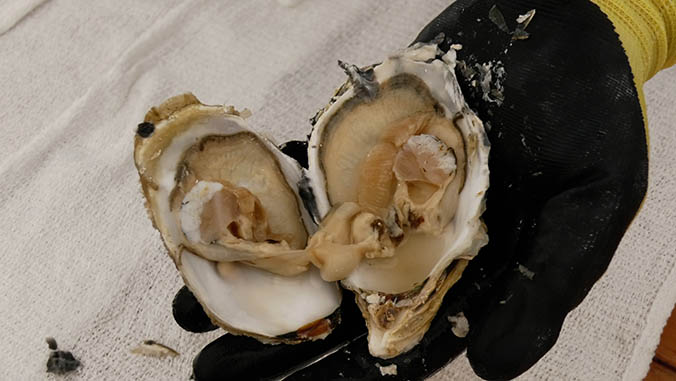
Tanks full of ornamental fish and oysters are bubbling on the Big Island at the University of Hawaiʻi at Hilo Pacific Aquaculture and Coastal Resources Center. Here, hundreds of students have gained valuable hands-on experience at the nine-acre center in Keaukaha, developing aquaponics and raising ornamental and food fish, shellfish and algae throughout the year.
UH Hilo Associate Professor Maria Haws serves as the center’s director. She says about 400 students have been employed since workforce training started there in 2008.
“We (also) have interns and volunteers and research students. They’ve learned everything about aquaculture production, everything from the hatchery, where we might produce juvenile fish or juvenile oysters, everything up to the actual farming of these organisms,” says Haws.
UH Hilo has the only four-year aquaculture program in the state, and the center has the only facility dedicated to aquaculture and coastal management education, research and outreach to the community and industry.
“I get to do a lot with fish and fish rearing systems so I get that hands-on knowledge that I wouldn’t get if I was just sitting in a classroom,” says Orion Friels, a sophomore majoring in aquaculture. “I feel like I’m learning a lot more this way.”
Hope Helg earned her agroecology degree from UH Hilo in 2011. Today she manages the algae laboratory that feeds oysters and other marine organisms at the center.
Helg says working at the center as a student prepared her and others well. “It’s a good way of critical thinking and being creative, and it sets students up for the future in the real world,” she said.
Besides training the workforce and researchers of tomorrow, the UH Hilo center is helping to develop sustainable seafood production.
“We import 80 percent of our seafood in Hawaiʻi. What could be more important than trying to be more self-reliant in food and also conservation?” asks Haws. “Almost everything we do in aquaculture has a tie to conservation if not directly influencing conservation efforts.”
The center’s work is gaining national recognition. It is a partner with UH Sea Grant as a Center of Excellence for Sustainable Aquaculture and received National Sea Grant funding for oyster farming in Hilo Bay.
—By Kelli Trifonovitch


